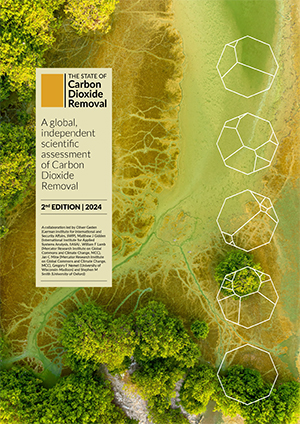The state of Carbon Dioxide Removal - edition 2

The State of CDR reports are intended to regularly inform researchers, policymakers and practitioners on the state of progress, by systematically collecting and analysing the vast amount of data and developments in many parts of the world.
The second edition continues the assessment of CDR development, expanding geographical coverage and including new topics such as voluntary markets and monitoring, reporting and verification.
Starting with Edition 2, authors of the report have compiled data on a number of Key Indicators of the State of CDR. These indicators showcase the current state of play, direction of travel, and benchmarks for future CDR needs consistent with sustainably limiting temperature increase in line with the Paris Agreement. The data behind these indicators will be freely available via the newly developed State of CDR data portal.
The State of Carbon Dioxide Removal Edition 2 identified a subset of scenarios that can be considered “more sustainable”. Across this group of scenarios, the central range of CDR deployment is 7 to 9 GtCO₂ per year in 2050.
Around 2 GtCO₂ per year of CDR is taking place already. Almost all of this comes from conventional CDR methods. Novel CDR methods contribute 1.3 million tons (0.0013 Gt) of CO₂ removal per year. That is less than 0.1% of total CDR, but novel methods are growing more rapidly than conventional methods.
Josh Burke was a lead author and Leo Mercer a supporting author for Chapter 10: Monitoring, reporting and verification.
Smith, S. M., Geden, O., Gidden, M. J., Lamb, W. F., Nemet, G. F., Minx, J. C., Buck,
H., Burke, J., Cox, E., Edwards, M. R., Fuss, S., Johnstone, I., Müller-Hansen, F., Pongratz, J.,
Probst, B. S., Roe, S., Schenuit, F., Schulte, I., Vaughan, N. E. (eds.) The State of Carbon Dioxide
Removal 2024 – 2nd Edition. DOI 10.17605/OSF.IO/F85QJ (2024)

